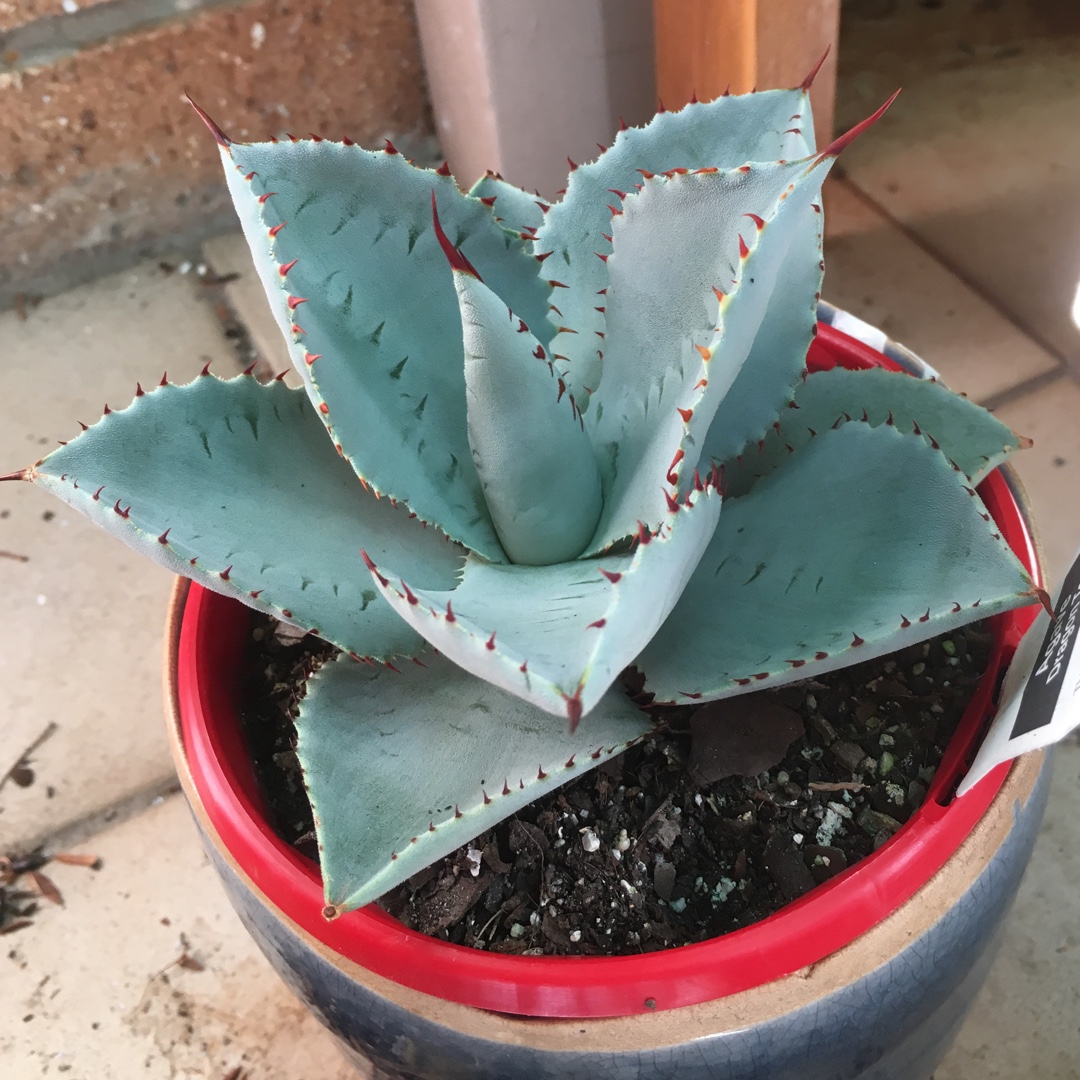
Agave Pygmae
Dragon Toes
Agave Dragon Toes is a smaller hybrid dwarf blue agave. The plants only grow to about 12 inches tall. Dragon Toes is prized for its soft looking grey/green but chunky thick leaves that are speckled with red tips. Each leaf has a very distinct red speckle imprint on it. This agave is great for smaller gardens and/or container growing. It is usually planted in full sun except for hot inland and desert gardens. Light shade in these hotter areas will prevent scorching of the foliage. Dragon Toes requires little irrigation but in the heat of summer some regular regularly watering will keep it more vigorous. It is cold hardy to at least 25 deg. F.
Contributed by @pandabear
-
Full sun
-
Very little water
-
Frost Hardy: 23F (-5°C)
-
Free draining and fertile
Common name
Dragon Toes
Latin name
Agave Pygmae
type
Succulent
family
Asparagaceae
ph
5.0 - 7.0 Acid - Neutral
Plant & bloom calendar
-
Best time to plant
-
When the plant will bloom
full grown dimensions
 1.50 M
1.00 M
1.50 M
1.00 M
Agave Pygmae
Agave Dragon Toes is a smaller hybrid dwarf blue agave. The plants only grow to about 12 inches tall. Dragon Toes is prized for its soft looking grey/green but chunky thick leaves that are speckled with red tips. Each leaf has a very distinct red speckle imprint on it. This agave is great for smaller gardens and/or container growing. It is usually planted in full sun except for hot inland and desert gardens. Light shade in these hotter areas will prevent scorching of the foliage. Dragon Toes requires little irrigation but in the heat of summer some regular regularly watering will keep it more vigorous. It is cold hardy to at least 25 deg. F.
Flowering Season
From Mid Summer TO Late Summer
This plant will flower when it is mature. Many varieties of agave will die after blooming and then produce pups or offshoots from their base to replace themselves. On varieties where the parent plant doesn’t die after flowering, it is a good idea to get long handled pruners and remove the spent bloom.
Planting Outdoors Spring
From Early Spring TO Late Spring
Agave have a large tap root and do not transplant well, so choose an appropriate site when planting agave. The majority of the roots are surface roots and do not require a deep hole if planted when young. Check your soil for drainage, or if planting in heavy clay soils amend the soil with sand or grit. Mix in enough sand to make the soil halfway comprised of grit. Water the plant diligently for the first week and then cut it to half the second week. Taper off even more until you are only watering once every week or two.
Propagating by offsets
From Mid Autumn TO Late Autumn
Offsets are the baby plants that form at the base of some plants, and they are an easy way to propagate a plant. When the offsets have grown large enough to handle - and, hopefully, have some roots of their own,- gently break them away from the mother plant. Plant the offsets in a container and keep the plant barely moist (but not wet) until the plant is establishes, and can be planted out.
















